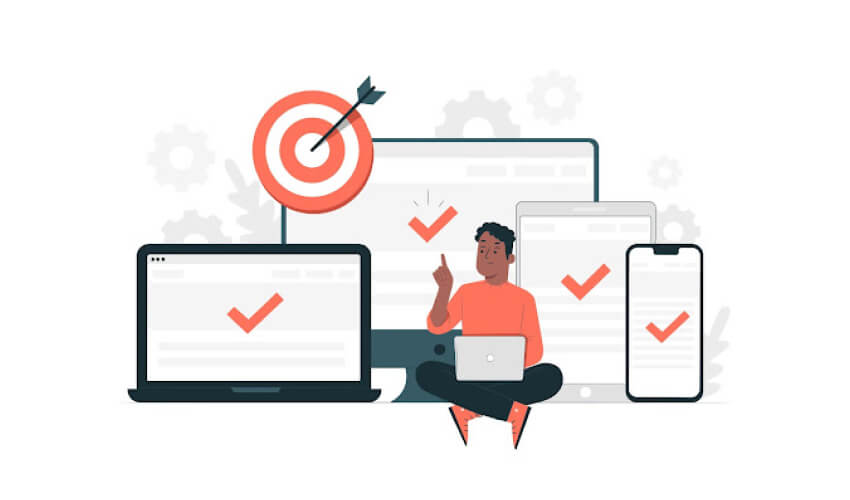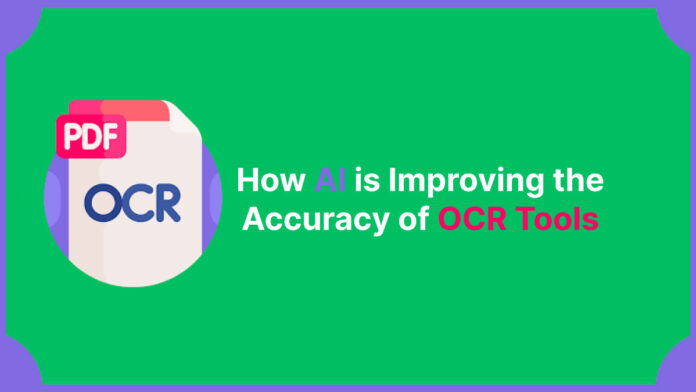In terms of digitizing and extracting information from documents, optical character recognition (OCR) has revolutionized the field. Traditional OCR software, on the other hand, has limits when it comes to reading cursive text. Complicated layouts, and reliably identifying characters in documents with poor image quality. Accordingly, a new iteration of OCR technology, known as AI OCR. It is part of the Industrial Revolution and redefining data extraction with enhanced accuracy. AI OCR Tools is driven by the emergence of Artificial Intelligence (AI) and Machine Learning (ML).
There were promises of huge time and money savings when optical character recognition (OCR), which transforms printed or handwritten text into a machine-readable format, was first launched in the 1980s and 1990s. Regrettably, conventional OCR systems were never fully up to par.
Properly identifying anything from addresses to proper names to sum totals using contextual clues present in documents. Modern AI-powered OCR can also use that data to guide data-driven judgments. As a result, before the automated process starts. There is little need for manual exceptions, pre-sorting, or template-based document preparation.
How does Artificial Intelligence help in Boosting OCR Technology?
Optical character recognition (OCR) software’s capabilities are changing due to artificial intelligence. OCR, a subfield of computer vision, analyses text pictures. And transforms them into formats that computers can understand. In other words, it digitizes typewritten or handwritten content included within physical documents. OCR, also known as text recognition, was widely utilized by business owners in the 1990s to transform paper documents into digital files.
OCR technology’s quality has since improved. But the need for more usefulness has grown. OCR’s usefulness has been increased by recent advancements. AI helps to improve accuracy and speed. AI has the advantage of eliminating the need for constant human supervision.
How does OCR Technology Work in this Modern Digital World?
What exactly is the process of contemporary OCR technology? Smart AI algorithms are used in modern OCR Tool solutions to create a neural network. The result is extremely precise, automated processing that can comprehend context. Skim read, and arrive at precise, fact-based choices. The image to text converter can be divided more precisely into a few crucial steps:
The pre-processing and analysis stage comes first. Importing the document is necessary, and the goal is to standardize inputs. And ensure alignment and suitable sizing to reduce variables. Additionally, it may involve the removal of flaws like stains, and dust. And hairs to provide a more refined image as well as object detection. Which will assist the software in subsequently focusing on particular areas.
The next step is binary conversion. Which enables OCR systems to recognize characters more quickly. Here, a bi-level image made entirely of black and white hues is created from the refined image document. White portions are viewed by the system as background. And dark areas are read as characters to be processed.
The OCR solution processes the black areas to detect letters and digits. After differentiating between the backdrop and characters. One of two algorithm types, pattern recognition or feature detection is used for OCR. Which typically works one character or text block at a time.
Pattern recognition algorithms used by OCR systems add text in a variety of formats and fonts to the software. After comparing the pixel values of the scanned letters with those of recognized typefaces, this provides a basis for comparison that enables the OCR solution to identify characters.
Related Search: How to Convert Image to Text for Free in 2023?
How to Boost OCR Accuracy

Using OCR technology for work can be challenging, and it takes practice to avoid mistakes. Here are a few recommendations for increasing OCR accuracy:
Source images of high-quality
Make sure you can read the photos with your own eyes before using OCR. Check the source photographs for damage and wrinkles. If you can’t see the image well with your own eyes. Use the purest and most authentic files, then, for the best outcomes.
Appropriate image sizes
The proper resolution must also be used for the source photos for the OCR engine to read them. Make sure the image or PDF file is shrunk to the appropriate size. Which is typically less than or equal to 1.5 mm × 1 mm (1/10 of the original size). The outcome will be more accurate in this method.
Denoise / Remove Noise
Even human eyes struggle to interpret papers with a lot of noise, and neither does the OCR engine. Noise might reduce the OCR accuracy. It makes it challenging for the engine to read sources. Remove any background or foreground noise from the image to obtain a data extraction that is of higher quality.
Boost image contrast
How do you perceive light grey ink on white paper? Reading such articles must be uncomfortable for both you and the OCR engine. Therefore, attempting to improve the contrast between the text and background results in a clearer output. The OCR engine will read photos most accurately with the best contrast.
De-skew Primary Source
Nobody likes to read papers backwards. Make sure the image is the correct size and shape (the text should be horizontal, not slanted). To rotate an image, tilt it to one side, and turn it in either a clockwise or counterclockwise direction. And then tilt it back to the opposite side.
Since both of them operate in the same ways, the accuracy of OCR and human input is the same. The sole distinction is that OCR uses engines to carry out the tasks.
Selecting the best engine is essential because it depends on numerous factors. Gleematic is the OCR engine you need if you want the highest level of accuracy. To improve OCR accuracy, we use cognitive automation and cutting-edge machine learning.
Also See: BitTorrent vs uTorrent Which Provide Better Torrenting?
Developments in OCR technology
Compared to conventional or template-based OCR technology, AI-based OCR offers the following benefits
Increased precision
It can identify characters more accurately even when the text is deformed, of poor quality, or obscured by background noise. Additionally, it can fill in any minor gaps in text brought on by blurry images or other visual obstacles.
Increased layout and formatting flexibility
The technology can quickly and accurately recognize columns and tables. And other formatting structures in complicated document layouts. Which improves the accuracy of digitization in keeping the original formatting.
Handling handwritten and cursive text
When it comes to handwritten or cursive text, traditional OCR frequently fails. In this field, AI OCR algorithms have advanced dramatically, increasing the precision. And dependability of handwritten data extraction.
Support for multilingual OCR
The system enables companies to handle multilingual documents without difficulty by being able to recognize characters and languages other than English.
Also See: Tips for Getting Featured on Behance
Applications of OCR technology
Optical character recognition: What is it? OCR has many uses, and any company that manages physical documentation can profit from using it. Here are a few use scenarios that stand out
Processing words
Word processing was possibly one of the earliest and most popular applications for OCR. Users can scan printed papers to create copies that can be searched and edited. AI aids in ensuring that these papers are transformed as accurately as feasible.
A legal document
Important signed legal papers, such as loan paperwork, can be added by OCR to an electronic database for quick access. The materials are also easily viewable and shareable by several parties.
Fintech Software
Due to laborious manual data entry or inadequate OCR technology. Expense management and bill payment solutions frequently provide a bad user experience. By immediately and precisely collecting and categorizing line item details from expenses submitted for reimbursement, AI OCR can completely change the user experience.
Banking
Nowadays, you can take a front and back photo of a check you want to deposit using your smartphone. The check can be automatically reviewed by AI-enabled OCR technology to ensure. That it is legitimate and equals the amount you want to deposit. Without the help of AI, OCR technology would not be as advanced today. OCR and AI work together to drastically enhance conversion accuracy. Cut down on errors, and offer further analysis to documents. Companies seeking a more effective approach to document management are drawn in large part by the reduced administrative and financial burden.
But when it comes to automating accounts payable procedures, OCR shines. Each year is predicted to see the issuance of more than 550 billion invoices. Each issuer’s invoices typically differ from one another.
OCR software powered by AI makes it simple to scan and extract precise data from invoices. You may sit back and let your powerful OCR solution handle it. Rather than putting in endless hours manually entering data or establishing new templates for every change.
Conclusion
Data extraction from different document formats is now more accurate and efficient. Thanks to the development of AI-powered OCR. Companies must widely utilize the technology to be competitive as industries continue to grasp its potential.
Organizations may unleash new levels of efficiency and accuracy. That will drive their success by keeping up with technological innovations. And leveraging such capabilities into their own apps and business processes.
Discover Useful Free Tools Relevant to This Article
Below are some helpful, free web tools that can support your projects and tasks relevant to the ideas and tips shared in this article. These tools are designed to make your work easier and more efficient for free:


